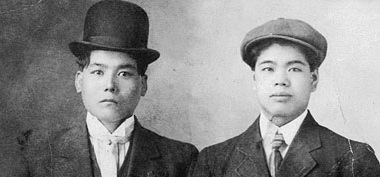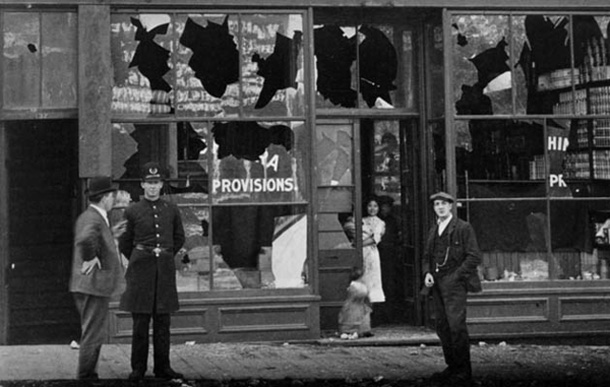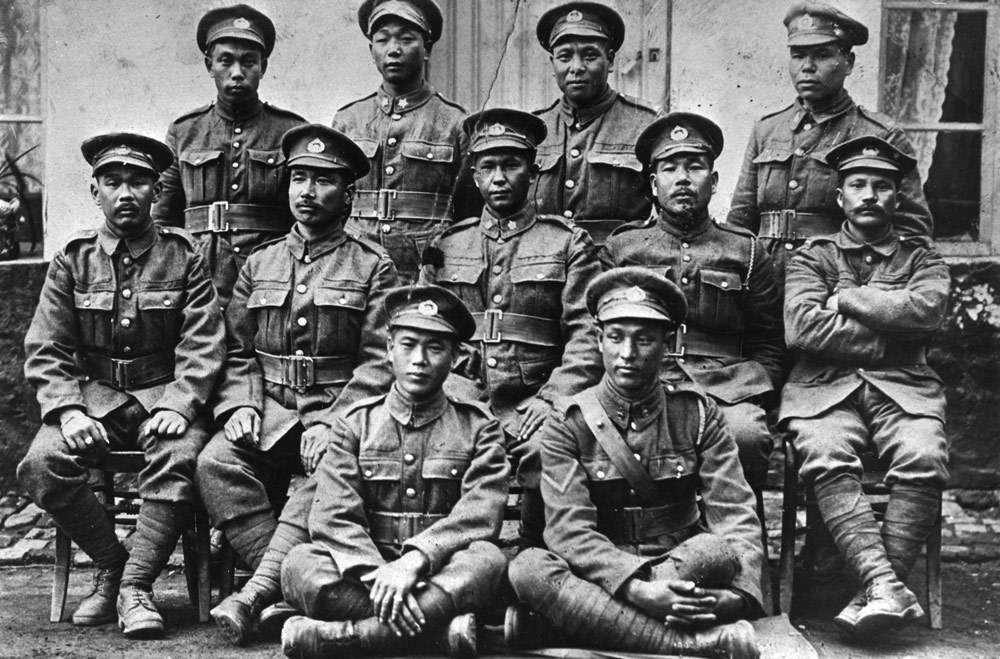During the period from 1900 to 1942, there was a lot of talk in British Columbia around the Oriental Problem. Both the Chinese and Japanese immigrants were included in the problem, however, only the Japanese will be looked at in terms of the problem that B.C. saw itself having. The Japanese immigration to Canada happened over a short amount of time and they came in numbers that alarmed British Columbians. The first landed Japanese immigrant came to B.C. in May 1877.[1] They were the start of the first wave of immigration that took place from 1877 to 1928. Most of the Issei, the first generation of Japanese immigrants, that came to Canada before 1907 were men.[2] They came looking for work in farming, logging, sawmills, fishing, canneries and the Canadian Pacific Railway and would settle in Vancouver, Steveston and throughout the Fraser Valley.

Image Source: https://www.bac-lac.gc.ca/eng/discover/immigration/history-ethnic-cultural/Pages/japanese-immigration.aspx
Euro-Canadians in B.C. considered the Japanese immigrants to be a growing problem within their province because of several factors. First, the Japanese population was growing rapidly from both immigration and their growing families. Second, Euro-Canadians felt that the Japanese were resisting assimilation because of their tight-knit Japanese communities that the Issei were forming. Third, because of the Issei’s economic success, Euro-Canadians saw them as a growing competition in both the work force and in the market. Finally, Imperial Japan’s actions overseas during the 1930’s looked increasingly threatening to Canada, especially British Columbians. All of these factors not only led to discrimination again the Japanese Canadians, but tensions growing between them and the Euro-Canadians in B.C. and the eventual expulsion and internment of Japanese Canadians during the Second World War.
Immigration became one of the key issues within the Oriental Problem that Euro-Canadians within B.C. felt was a looming threat. In 1901 a census was taken and it stated that there were 4738 immigrants of Japanese ancestry in Canada[3] and 97% of them lived within B.C.[4] By 1907 the number of Issei in B.C. was continually growing and Euro-Canadians felt that the Issei were taking jobs away from them. On September 7, 1907, what was supposed to be a rally against both Chinese and Japanese immigration and employment turned into riots[5] breaking out in Chinatown and the Japanese community known as “Little Tokyo”[6] in Vancouver. As a result, both communities were heavily damaged. In response to public outcry the Canadian Government and Imperial Japan came to a gentlemen’s agreement that only 400 Japanese immigrants would be allowed into Canada per year.[7]

A shop in Vancouver following the Riot on September 7, 1907.
Image Source: https://thetyee.ca/Culture/2015/07/03/The-Riot-That-Changed-Canada/
Following the agreement, a majority of the Japanese immigrants coming to Canada were women either joining their husbands or as picture brides coming to wed men already living in Canada. Despite the new restrictions on immigration by 1911 the population of Japanese immigrants in Canada had reached about 10,000.[8] Again in 1928 Canada and Japan came to another gentlemen’s agreement and reduced the number of immigrants allowed per year from 400 to 150.[9] While Japanese still continued to immigrate to Canada, the 1928 gentlemen’s agreement brought an end to the first wave of immigration from Japan in B.C.
Euro-Canadians in B.C. felt that the growing population of Issei contributed to the Oriental Problem because they resisted assimilation. While the Nisei were being immersed in the Canadian culture through their education, the Issei seemed to resist. While many Issei had come to Canada in search of better opportunities than Japan could offer, they continued to value their Japanese heritage and culture by settling within Japanese communities that already existed. These communities led many Euro-Canadians to believe that the Japanese Canadians had a “state within a state”[10] because it was through groups such as the Nokai and Kenjinkai that the Issei could preserve their culture and heritage. The Euro-Canadians saw these groups as a threat because they kept the Japanese language, traditional family and community roots alive and kept a distinct Japanese economy thriving within B.C. itself.[11]
Once settled in Canada, the Japanese immigrants were treated as second class citizens. They did not have the right to vote in federal or provincial elections and could not work in certain industries. It wasn’t until after the First World War that Japanese veterans who fought for Canada won the vote in 1931. Furthermore, during the Depression of the 1930’s, tensions between the Japanese Canadians and other Canadians would reach new heights. The tension was again due to inequality and prejudice in the work force, racism, and perceived lack of assimilation on the part of the Japanese; but a new factor was contributing to the tensions and Oriental Problem—Imperial Japan.

Japanese Canadians in the military for the First World War.
Image Source: http://najc.ca/japanese-canadian-history/
In the late 1920’s Japan began adopting an “expansionist foreign policy.”[12] In 1931, Japan invaded Manchuria, China in order to expand its territory.[13] However, due to the League of Nations negative response to Japans actions, Japan withdrew itself from the League so that they could continue to expand their territory without being held responsible by the League.[14] Then in 1937 Japan’s invasion of Manchuria led to the outbreak of the Sino-Japanese War. Japan’s ongoing aggression in Asia led to Euro-Canadians in B.C. to feel that an attack from Imperial Japan was becoming more probable. Furthermore, they felt that because of Japanese Canadians lack of assimilation they would join Imperial Japan in an attack on B.C.
These fears seemed justified to the Euro-Canadians in B.C with the outbreak of the Second World War in 1939 and Japan aligning with Germany and Italy in 1940. With Canada being a part of the Western Alliance during the war, Japan was seen as an enemy and immigration was put to a halt.